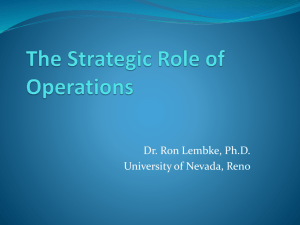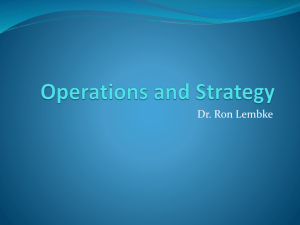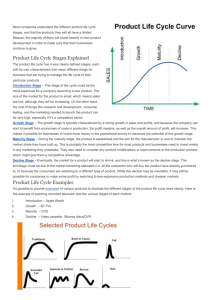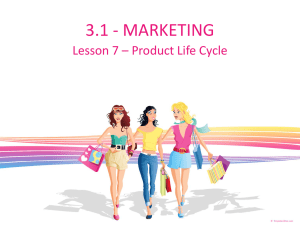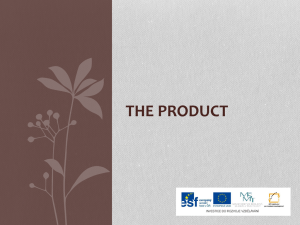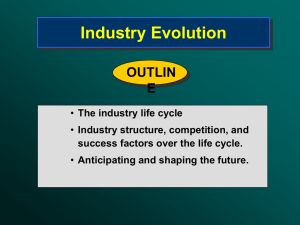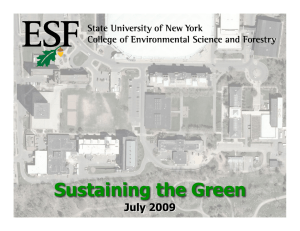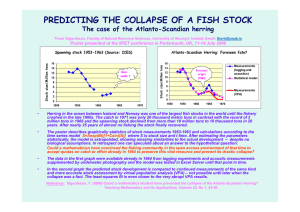OM & Strategy
advertisement
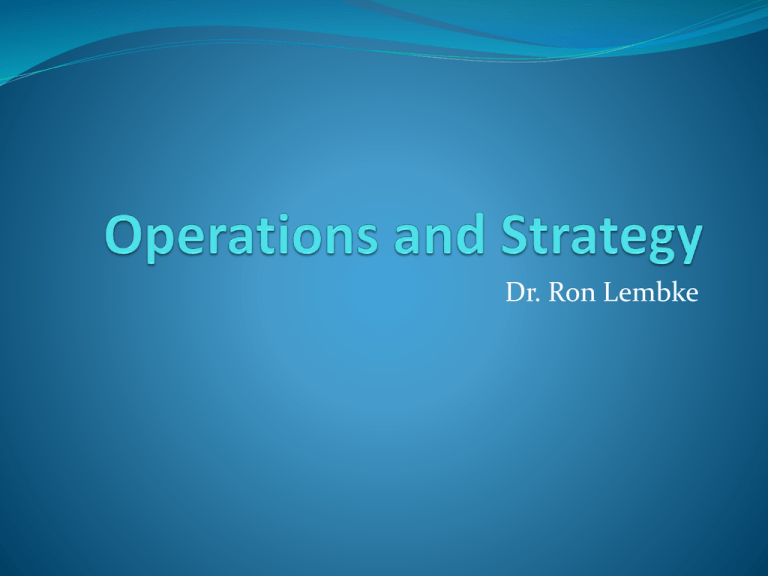
Dr. Ron Lembke Mission and Vision? Vision: reason for existence, long-term Mission: how to accomplish the Vision To provide society with superior products and services-innovations and solutions that improve the quality of life and satisfy customer needs--to provide employees with meaningful work and advancement opportunities and investors with a superior rate of return. (Merck mission statement) 2015 Values & Ethics How we’re going to behave Behaviors, Ethics – What about suppliers? Shapes decision making August, 2015 Mission Statement “Without a clear mission, an organization is unlikely to achieve its true potential, because there is little direction for formulating strategies.” Wouldn’t the same be true about people? My Favorite Guru When you think of something, put it on a list. Check your lists regularly. Don’t get sucked into email distractions. Get rid of the clutter you don’t need. Impact of Operations Enterprise Resource Planning systems Data Mining – data warehouses Data Analytics – ongoing search for improvement E-Commerce – flawless execution Globalization – suppliers everywhere What about subcontractors? Sustainability – there’s gold in them thar hills What is strategy? A Plan for achieving the Mission Core Competencies Company’s distinct abilities Source of competitive advantage Skills that differentiate the firm from its competitors What you could never dare trust to anyone else Soft drinks: the secret sauce Automobiles: designing engines Competitiveness: A firm’s relative position in comparison to other firms in the marketplace Strategy Strategy: a plan for achieving the mission Each functional area (accounting, finance, marketing) determines its “supporting mission” Tactics: the methods to be used to achieve the strategic goals. Must support mission, corporate values Michael Porter Three ways to achieve corporate mission: 1. Differentiation: Make your product different and / or better 2. Cost Leadership (lower prices): Wal- Mart, Southwest Airlines 3. Quick Response: Pizza Hut, FedEx Purchasing Triangle Quality Price Speed “Don’t be sad; two out of three ain’t bad” -Meatloaf Competitive Dimensions Cost – make it cheap Quality and Reliability – make it good Speed – make it fast Reliability – deliver when promised Responsive – exactly what the customer wants Cope with Change – change volume New product speed Customer support Quality – much harder to assess than speed or cost Focus Competitiveness Order qualifiers: screening criterion that allows your products to be considered deliver on-time, reliability, general quality Order Winners: criterion that differentiates your service/product above the competition price, quality, reliability “nice to haves” become “must haves” over time How will you beat the competition? Responsiveness – Supply Chain design Price / Quality / Speed? Decoupling Point Make to Stock – ready on the shelf – Breyer’s Assemble to Order – parts waiting for an order – DQ Make to Order – Raw Materials waiting – Cold Stone Engineer to Order – Anything you want – Home made Design MTS ATO MTO ETO Produce Assemble Deliver Impact of Life Cycle Pandora YouTube iTunes XM AM/FM Sony HX Introduction Growth CDs Records MiniDisc Cassettes DAT 8-Track Maturity Decline Impact of Life Cycle DVD Audio Introduction Growth Maturity Decline Records Impact of Life Cycle Introduction: develop product, small-scale production, customized, expensive Growth: ramp up production, marketing, increasing standardization, lower prices Maturity: standardized, volume production, optimization, falling prices Decline: cost minimization, eliminate unprofitable products Productivity Productivity = Outputs / Inputs Partial: Output/Labor or Output/Capital 320 miles driven / 8.2 gallons of gas = 39 mpg 25 tons of strawberries / 50 acres = 0.5 tons/acre Multifactor: Output / (Labor + Capital + Energy ) 20 tons of strawberries / ($2,250 chemicals + $2,500 hoop house costs + $1,250 Planting + $12,000 harvesting) = 20/18,000 = 0.00111 Multi-Factor Productivity Increases Take labor and capital into account “percentage increase in output that is not accounted for by changes in the volume of inputs of capital and labour.” Source: Economist, 2009
